History of Izhevsk
Foundation of Izhevsk
According to archaeological excavations, the first settlements appeared on the territory of Izhevsk in the 3rd-5th centuries AD. Over time, this land became part of the Kazan Khanate (1438-1552). In 1552, Russian troops captured Kazan and the Kazan Khanate ceased to exist. By 1558, the peaceful incorporation of the Udmurt lands into the Tsardom of Russia was completed.
In 1582, Ivan the Terrible granted the land in the lower reaches of the Izh River to the Tatar Prince Bagish Yaushev. In 1733, his descendants sold it to Alexei Ivanovich Tevkelev, a Russian diplomat of Tatar origin.
In 1734, in the Urals, a mountain was discovered with large deposits of iron. Several state-owned factories were built to extract and process ore in its vicinity. Ore reserves were so abundant that these factories could not cope with its processing. It was necessary to build additional factories.
In 1757, Count Peter Ivanovich Shuvalov received permission from Empress Elizabeth Petrovna to build three more ironworks in the Kama River area. It was decided to build one of the factories near the Izh River. In 1760, the construction of the Izhevsk factory and the village of the same name began here. This year is considered the founding year of Izhevsk. The population was about 200 people.
More Historical Facts…
Izhevsk Factory in the Russian Empire
By 1763, a dam was built and the Izhevsk Pond was created. After the death of Shuvalov, in order to pay off family debt, Catherine II signed a decree on transferring the Izhevsk factory to state ownership.
In 1774, during a peasant uprising led by Yemelyan Pugachev, the settlement was captured and all the factory superiors (42 people) were executed, the factory was looted and partially burned. After the liberation, production was partially restored, but because of the lack of large orders, difficult times came. In 1780, the population of Izhevsk was about 2,000 people.
At the beginning of the 19th century, the threat of war against Napoleonic France forced the Russian government to think about increasing the output of firearms and cold steel. In 1807, Emperor Alexander I signed a decree establishing a new weapons factory in the Urals on the site of the Izhevsk ironworks.
To staff the factory with qualified personnel, more than one hundred German, Swedish, and Danish gunsmiths, as well as toolmakers, blacksmiths, turners, and other artisans were invited. In addition, more than 1,000 artisans from other factories in Russia were transferred here. In 1840, the population was about 16,000 people.
In 1867, Izhevsk officially became a village. In 1885, in order to avoid a reduction in arms production in peacetime and a decrease in its technical level, the Main Artillery Directorate of the Russian Empire allowed the acceptance of orders for the manufacture of hunting weapons from private individuals. The production of civilian guns had begun, which ceased because of the start of mass production of the Mosin rifle in 1897. In 1917, the population was about 40,000 people. Until 1918, the settlement continued to be called Izhevsk Zavod (Factory).
Izhevsk in the 20th century and beyond
February 21, 1918, by the decision of the Izhevsk Soviet of workers, soldiers, and peasants deputies, the Izhevsk factory was transformed into the town of Izhevsk. In November 1920, the indigenous population of this region gained their autonomy. On June 10, 1921, the capital of the Votsk Autonomous Region was transferred from Glazov to Izhevsk. The first Russian motorcycle was produced in Izhevsk in 1929.
The beginning of the 1930s was a turning point in the development of Izhevsk and Udmurtia. In 1930, the first conference of Udmurt writers took place in Izhevsk, the Udmurt State Philharmonic Society, the theater and art school were formed.
In 1931, the Udmurt Pedagogical Institute (Udmurt State University), the Udmurt Institute of History, Language, and Literature, the Udmurt State Drama Theater (the State National Theater of the Udmurt Republic) were opened.
In 1934, Izhevsk became the capital of the Udmurt Autonomous Soviet Socialist Republic. The acquisition of capital status, as well as the deployment of large industrial enterprises in the city, led to its rapid development. By the end of 1935, Izhevsk became a large industrial center of the Urals. In 1939, the population of Izhevsk was about 175,000 people.
In the fall of 1941, during the Second World War, several defense enterprises were evacuated to Izhevsk. In June 1942, the Izhevsk Machine-Building Plant (“Izhmash”) was organized. During the war years, 11 million 145 thousand rifles and carbines, more than 15 thousand aviation guns, almost 132 thousand anti-tank rifles were produced in Izhevsk.
In 1949, the legendary designer of small arms Mikhail Timofeevich Kalashnikov moved to Izhevsk. His AK-47 assault rifle, manufactured at the Izhevsk Machine-Building Plant, successfully passed military tests and was adopted by the Soviet Army. December 12, 1966, the first Izhevsk car was produced. In 1967, the population of the city was about 376,000 people.
On December 27, 1984, at the initiative of the party authorities, Izhevsk was renamed Ustinov in memory of Dmitry Ustinov, the Minister of Defense of the USSR, who died 7 days earlier. Later, on June 19, 1987, after numerous protests by locals, the original name was returned to the city, and the name Ustinov was assigned to one of the new districts of Izhevsk.
In 1989, the population of the city was about 635,000 people. Izhevsk survived the turbulent post-Soviet period quite well thanks to the continued demand for its military products.
In 2008, Izhevsk became the main venue for the celebration of the 450th anniversary of the voluntary entry of Udmurtia into Russia. On September 3, 2010, Izhevsk celebrated its 250th anniversary. In autumn 2010, a reconstructed embankment was opened on the shore of the Izhevsk Pond.
Pictures of Izhevsk
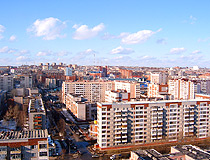
Izhevsk cityscape
Author: Igor V. Kuznetsov
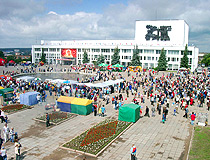
The central square of Izhevsk
Author: Boris Busorgin
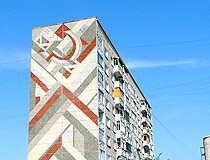
Soviet-era apartment building in Izhevsk
Author: Boris Busorgin
Izhevsk - Features
Izhevsk is located in the eastern part of the East European Plain, between the Vyatka and Kama rivers, on the non-navigable Izh River. The main reservoir of the city is the Izhevsk Pond. Created in the second half of the 18th century, the Izhevsk Pond is one of the largest artificial reservoirs in Eastern Europe.
The name of the city comes from the name of the Izh River on the bank of which the Izhevsk Ironworks was built and a village was founded in 1760. The City Day of Izhevsk is celebrated on June 12.
The climate is temperate continental with short warm summers and long cold winters. The warmest month is July with an average temperature of plus 19 degrees Celsius. The coldest month is January, its average temperature is minus 12.4 degrees Celsius.
Izhevsk is a developed industrial center of Udmurtia and the Urals. This city is known in Russia and in the world for the production of high-quality steels, advanced mechanical engineering, in particular: the production of weapons and military equipment, small arms and rifles, cars, and instruments. The legendary designer of small arms, General Mikhail Timofeevich Kalashnikov is an Honorary Citizen of Izhevsk.
The largest transport hub in Udmurtia, the city is located at the intersection of air routes, rail, and road transport. The main types of public transport are buses, trams, trolleybuses. The airport of Izhevsk offers mainly regular flights to Moscow and St. Petersburg. It takes about 17 hours to go from Moscow to Izhevsk by rail.
On the territory of Izhevsk there are more than 300 objects of historical and cultural heritage: 166 architectural monuments, 4 monuments of archeology, 81 objects of monumental art, and about 60 plaques.
The city has a lot of beautiful churches, unusual monuments, interesting museums, and pleasant green areas for walking. Tourists often buy souvenirs with weapons themes, patterned woolen socks and mittens, dolls in national Udmurt clothes, and paintings made by local artists.
Main Attractions of Izhevsk
St. Michael’s Cathedral. Located in the central part of Izhevsk, this church is considered a symbol of the revival of the spiritual life in Udmurtia and all of Russia. The original cathedral was built with the money of the workers of the Izhevsk factory in 1907-1915. In 1937, it was completely destroyed. In 2007, the building was restored. This church is 67 meters high and stands on the highest place in the city. Karla Marksa Street, 222.
Museum and Exhibition Complex named after Mikhail Kalashnikov - the most popular museum in the Udmurt Republic, a must-see place for everyone who is interested in the history of Russian small arms.
Here you can see not only the weapons created by Mikhail Kalashnikov, but also all models of small arms that have ever been or continue to be produced by the Izhevsk arms factory. The collection also includes numerous gifts and souvenirs presented to Mikhail Kalashnikov. Borodina Street, 19.
National Museum of the Udmurt Republic named after Kuzebay Gerd. Located in the building of the former Arsenal of the arms factory, an architectural monument of the 19th century, it is one of the largest museums in Udmurtia.
In total, the museum has about 200 thousand exhibits in several collections: weapons (cold and firearms), written sources and photographs, historical, archeological and ethnographic exhibits (national costumes, peasant utensils, etc.). The exhibitions are mainly devoted to the history and nature of Udmurtia, the history of peoples living here. Kommunarov Street, 287.
Udmurt Republican Museum of Fine Arts. The museum has about 13,000 exhibits: works of artists and folk craftsmen of Udmurtia, a collection of graphics, paintings, arts and crafts, Russian icons, and sculptures. Each collection in one way or another reflects the development of fine and decorative art of Russia in the 19th-20th centuries. Kirova Street, 128.
Museum of Izhmash (Izhevsk Machine-Building Plant). The collection of this museum shows visitors the history of the development of small arms in Russia. In the hall #1, you can see firearms (rifles, carbines) and cold steel produced from 1808 to 1947. In the hall #2, there are weapons of the Second World War. Part of the exhibits in the hall #3 is dedicated to Mikhail Kalashnikov. Sverdlova Street, 32.
Alexander Nevsky Cathedral (1818-1823). This church built in the style of Russian classicism is located in the historic center of the city and stands out against the backdrop of the traditional architecture of Izhevsk. Maksima Gorkogo Street, 66.
Izhevsk Zoo - one of the main attractions of the capital of Udmurtia and one of the largest zoos in the Volga region with an area of 16 hectares. There are several exhibition zones: “White North”, “Far East”, “Our Taiga”, “Pond”, and “Udmurt Village”. Kirova Street, 8.
Embankment of the Architect Dudin. Located on the shore of the Izhevsk Pond mostly in the central part of the city, it was named in honor of the first architect of Izhevsk S.E. Dudin. In 2010, the embankment was reconstructed and became one of the most popular places among locals and visitors of Izhevsk. This is one of the most picturesque places in Izhevsk.
Monument “Friendship of Peoples” (“Forever with Russia”). This monument was erected in honor of the 400th anniversary of the entry of Udmurtia into Russia in 1972. It is a 46-meter stela consisting of two pylons symbolizing Udmurtia and Russia. The monument has an inscription in Udmurt and Russian languages: “Glory to the great friendship between Russian and Udmurt peoples”. Likhvintseva Street (on the shore of the Izhevsk Pond).
The main building of the Izhevsk arms factory (1808-1815) - the first multi-story industrial building in Russia, a monument of urban planning and architecture of national significance. Deryabina Street, 3.
Monument to the Izhevsk Crocodile. This postmodern monument is a two-meter statue of an imposing anthropomorphic crocodile sitting on a bench. It was planned that the monument was to become an unofficial symbol of Izhevsk. The choice of a crocodile as a symbol was not accidental. At the beginning of the 20th century, there was a legend about crocodiles living in city rivers. Crossroads of Kommunarov and Sovetskaya streets.
Museum-Reserve “Ludorvay” - an architectural and ethnographic complex located on the territory of the village of Ludorvay about 15 km south-west of Izhevsk. It consists of 21 buildings including two manor houses, village houses, and outbuildings. On the territory of this museum you can get acquainted with the culture of the Udmurt people, try dishes of national cuisine, take part in a folklore event.
Izhevsk also has such cultural institutions as an opera and ballet theater, a Russian drama theater, a national theater, a puppet theater, a circus, a philharmonic.


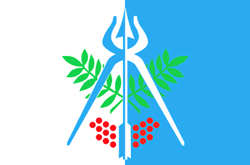
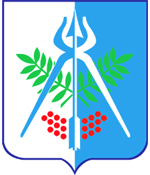
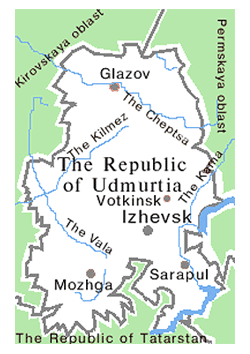



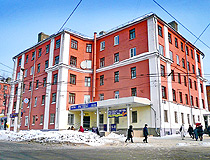
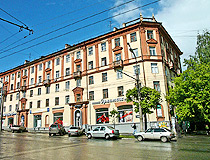
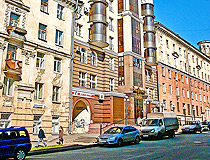
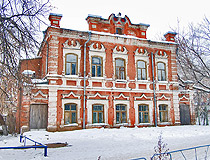

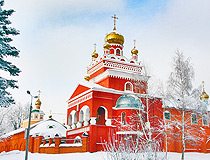
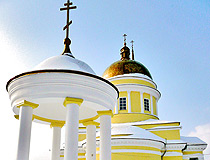
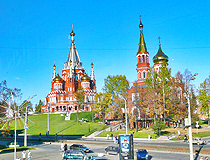
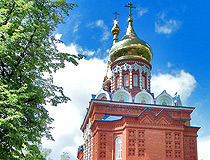
The comments of our visitors